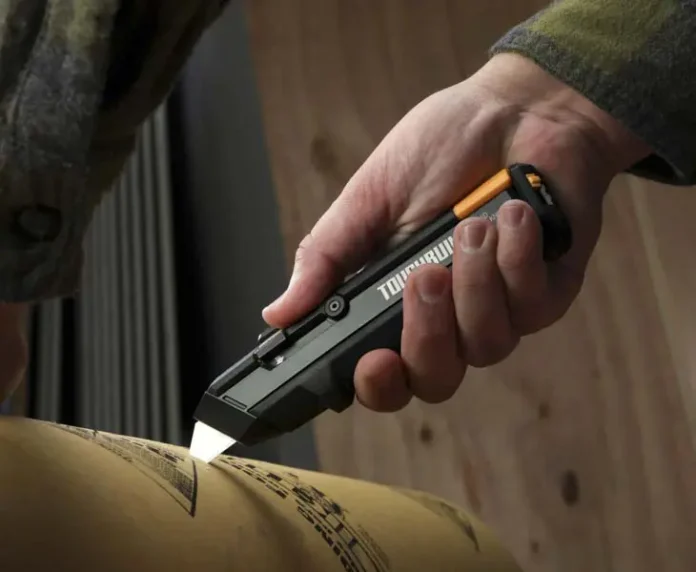A utility knife is one of the most super-handy tools you can own. Whether you are cutting through boxes, recycling materials, or removing stubborn sealant, it makes every job much easier. I have used myself countless times, from simple home tasks to quick fixes at work. There are dozens of ways to use one, and finding the right one means considering various candidates that fit your needs. With the right pick, you can handle tasks efficiently without struggle.
If you’re looking for a good deal, it’s important to pick a cheap but reliable option that actually gets the work done. In many cases, people end up with basic knives, but the best ones stand out by focusing on details that set them apart from the norm. Some models come with special features that make them worth the extra spending in dollars. A good function combined with ease of use makes all the difference, especially when choosing between entry-level and more advanced options.
A great knife, whether it’s a pocket knife or a folding knife, should offer durability and versatility. From single-blade designs to multi-tool setups with scissors and corkscrews, there’s a lot to explore. High-quality steel, strong locking mechanisms, and smooth opening mechanisms make using them effortless. Size and weights also matter, as does finding something comfortable for daily use. Whether you’re unboxing an Amazon package, snipping tags, or preparing a lime wedge for a beverage on a boat day, the right tool makes it all simple. Personally, I prefer knives that can handle both camping, hiking, and fishing trips, making them ideal for outdoor activities when household tools aren’t around.
Our Top Pick’s:
- Overall Top Pick: Milwaukee Fastback
- Best For Hard Use: Gerber Prybrid
- Best Pick For Dry Wall: Milwaukee Fixed
- Hard Pick: Stanley Heavy-Duty
- Best Pocket Friendly: GERBER EAB LITE
How We Test Utility Knives:
When it comes to testing utility knives, our approach is comprehensive and focused on real-world use. We test knives from major manufacturers, including big name brands, to ensure that they meet the needs of everyday users. Over the years, we have spent time with knives from various knife brands, testing them for sharpness, ergonomics, and overall durability. Our testing includes a variety of tasks such as opening packages, field dressing elk, and cutting through tough materials like drywall and cardboard boxes of varying sizes. We’ve also reviewed new releases over 10 years of testing, ensuring a balance between budget, preferences, and lifestyle choices.
Each knife is put through specific tests that measure factory edge sharpness and corrosion resistance. We subject them to a salt water bath and air drying to check how they handle moisture and if they rust over time. For more precise measurements, we use a blade sharpness measurer to assess the sharpness of each knife, averaging results from multiple tests. Additionally, we test how well knives handle tougher cuts, such as slicing tomatoes, dicing up caulking, or mincing parsley. We also test their agility, especially during rock-chop motions and their ability to perform in longer projects with tough cuts.
We also evaluate the ergonomics of each knife, checking its comfort and grip after extended use. Whether it’s during sharpening pencils, trimming, or opening boxes, a knife should feel comfortable in your hand. We ensure the ease of blade change, check the leverage of the folding mechanism, and whether blades disengage easily during use. Throughout all these tests, we make sure to assess how well each knife holds up to daily tasks and if it maintains its sharpness over time.
Lastly, after every test, we perform cleaning and usability tests, seeing how easy each knife is to clean and whether it becomes slippery when wet. These tests also let us determine how well each knife maintains its sharpness and usability in a variety of knife tasks during a 48-hour period, ensuring that our recommendations are based on practical, real-world performance.
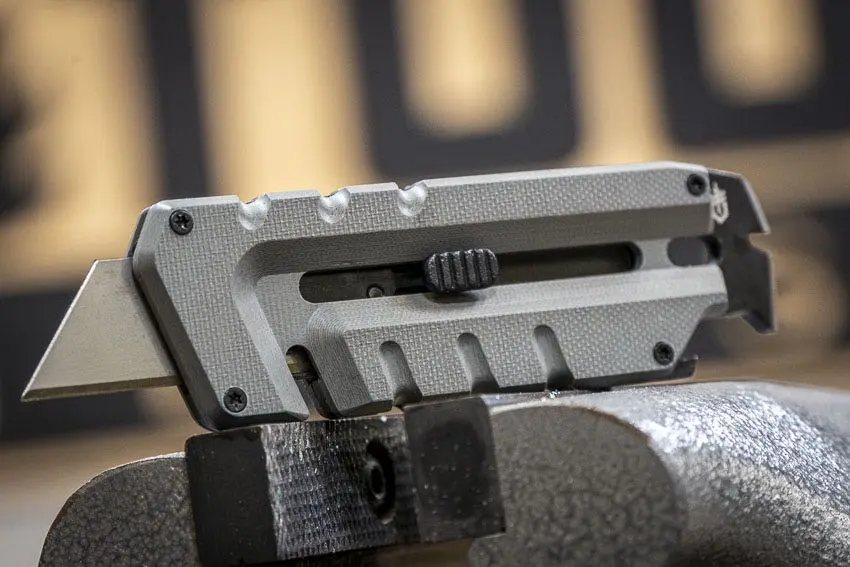
1. Milwaukee Fastback:
If you’re looking for a folding utility knife that combines functionality and affordability, the Milwaukee Fastback is a game-changer. At just $25, it offers impressive tools packed into a compact design. The Fastback uses standard sized utility blades, making it easy to swap out blades quickly. The quick-release mechanism with its oval-shaped button allows you to slide out the blade effortlessly, and there’s even a wire stripper slot on the bottom of the shank, perfect for light electrical work. Whether you’re cutting, stripping wire, or simply handling various tasks, this knife covers all your needs.
What sets the Milwaukee Fastback apart is its smart design and ease of use. No thumb stud or flipper tab—just press the lock button and give it a quick wrist flick, and the blade snaps out. It’s that simple! The knife also doubles as a fidget spinner for grown-ups when you’re bored, offering hours of fun. For those looking for versatility, the 6-in-1 functionality is a standout feature. The extendable bit driver along the spine holds a ¼” hex drive bit, with both a Phillips #2 and a straight driver. Additionally, there’s a hidden storage compartment inside the handle to store a spare utility blade. With a deep carry wire-style pocket clip for righties, the Milwaukee Fastback stands as the gold standard in folding utility knives, offering both durability and convenience in one easy-to-use tool.
2. Gerber Prybrid:
The Gerber Prybrid stands out as a versatile multitool that combines the best of a utility knife and a variety of other essential tools, making it a go-to for both professionals and everyday users. Its design is compact yet highly functional, with a slide-out mechanism for easy blade swapping. The locking mechanism ensures the utility blade stays securely in place, while a quick-release mechanism allows for fast changes. For construction workers or anyone involved in metal construction, the Prybrid is a must-have, thanks to its impressive range of features like a pry bar, nail puller, flathead screwdriver, bottle opener, and even a cord cutter. The handle is designed with a cutout for cord cutting and includes a lanyard hole, allowing it to be stored easily or kept handy in a watch pocket.
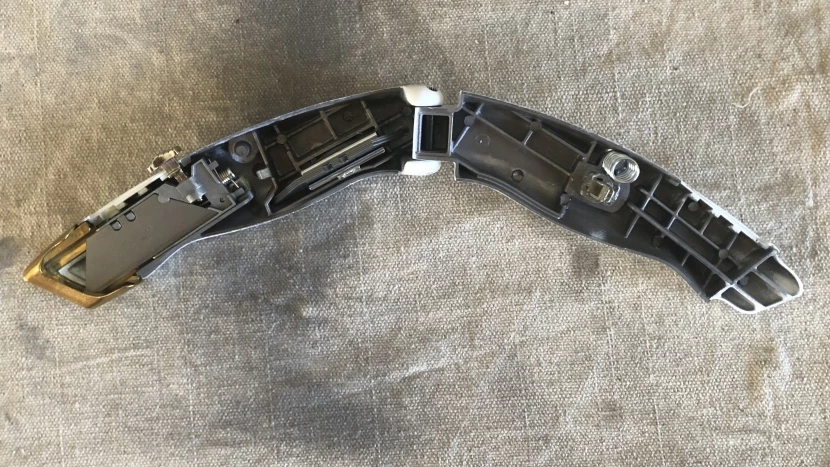
The Prybrid is made from stainless steel, with machined G10 scales over a solid steel backbone, offering durability and a premium feel. Available in green or grey, it’s designed for practicality and usability. Its versatility surprises many, serving as a utility knife for everyday tasks and a tool combination to tackle the rough stuff. Even though it’s a compact tool, its physical form is small but powerful, delivering great value for those who need multifunctionality on the go. The Gerber Prybrid is more than just a utility knife; it’s a complete solution packed into a convenient size.
3. Milwaukee Fixed:
When working with a fixed blade utility knife, I find that the Milwaukee 48-22-1513 stands out for its simplicity and ergonomics. Its design is straightforward, offering great control and visibility with an angled utility knife that allows for precision. What I love most is the metal body, making it durable enough to withstand tough jobs on the jobsite, and it even stores up to five additional blades inside, which is a major plus when you’re on the go. The shape of the handle fits comfortably in the hand, and the wrist strain is minimized due to the angle of the blade, which ensures you can complete standard cutting tasks without discomfort.
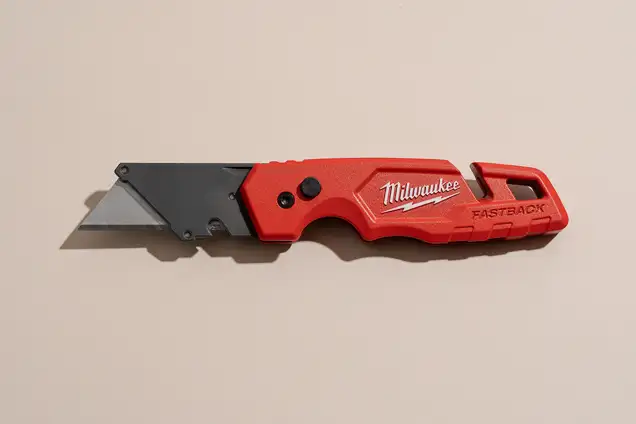
For under $10, this tool is an excellent choice for anyone who values simplicity but still wants a knife that can handle multiple cutting needs. Whether you’re cutting through drywall or working on other materials, the flip-out model is less prone to wobble than many other options, ensuring that every cut is clean and smooth. Overall, the Milwaukee 48-22-1513 strikes the perfect balance between functionality and ergonomics, making it a reliable companion for anyone who needs a utility knife that’s tough enough for heavy use yet easy on the wrist.
4. Stanley Heavy-Duty:
If you’re someone who works with utility knives regularly, you know how important it is to have a durable and reliable blade on hand. The Stanley Heavy-Duty Utility Blades are perfect for those tasks that require both strength and precision. With a 100-pack, you get a long-lasting supply that can tackle multiple projects over the course of years. These blades are designed to prevent dull blade issues that can make cutting dangerous, forcing you to exert unnecessary effort. Instead of dealing with ragged or crooked cuts, the Stanley Heavy-Duty Utility Blades ensure a clean result, making each job more efficient.
The 5-pack or 100-pack options offer great value, especially if you are tired of buying smaller packs that cost more per blade. The blades come neatly stored in a case that fits easily on a peg board or a nail, so you can always grab a single blade when needed. Whether you’re cutting through cardboard, plastic, or other materials, swapping to a new blade becomes a simple task. When you consider the cost—about $3 for a smaller pack and $10 to $15 for larger quantities—you’ll see why this is a great option for professionals and DIYers alike.

5. Gerber EAB Lite:
The Gerber EAB Lite is a minimalist utility knife that packs a punch in terms of both design and function. Despite its tiny, folded size, this knife is perfect for medium-duty tasks like cutting through metal or aggressive edges to break down boxes. At just 2.2 ounces and 2.85” when closed, it easily fits into your pocket or even a wallet, making it a great companion for quick tasks on the go. The smooth square shape of the handle and blade holder ensure the knife feels ergonomic in your hands.
The EAB Lite uses a simple, reliable liner lock to secure the blade in place, making it safe to use without the wiggle or play that can sometimes be a concern with other knives. While the knife doesn’t have a quick-release mechanism for the blade, it’s easy to change the blade using a flathead screw. The replaceable blade is a bonus, allowing you to swap it out when it’s no longer sharp enough for your tasks. This streamlined shape and extra-wide pocket clip add to the convenience, making it suitable for both personal use and as an Exchange A Blade option. Lunch at Five Guys might cost more than this budget-friendly knife, and its size and functionality easily surpass the cost of a daily credit card purchase. Whether you need it for quick jobs or just a reliable utility option, the Gerber EAB Lite stands out.
Buying Guide For Pocket Knife:
Get the Best Fit for Your Hand:
When it comes to choosing the best utility knives, the most important factor is how the knife feels in your hand. I’ve used several knives over the years, and I’ve found that the dimensions and weight play a huge role in comfort. For example, if you have bigger hands like mine, a tiny knife might feel awkward, while a larger, oversized blade can sometimes feel too bulky. On the other hand, smaller knives tend to be more comfortable for those with smaller hands, especially if you need something to carry discreetly. In my case, I prefer something manageable and slim, as it fits perfectly in my pocket and doesn’t stand out. But for those working on a farm or in the trades, you might want a burlier knife that can handle day-to-day abuse and prying tasks.
Blade length is another thing I’ve learned to appreciate. Most knives are between 2.5 inches and 4 inches, but I personally find a 3-inch blade to be the sweet spot. It’s not too long or too short, offering a good balance of control and power. The overall length of the knife is just as important – when the blade is open, it’s usually about twice the length of the blade, making it easy to use. I’ve also found that the closed length is crucial when you’re carrying it in your pocket or clipped to your bag. If the knife is too long or bulky, it won’t be comfortable to carry around all day.
Finally, the weight of the knife is a major factor in choosing the right one. Some people prefer a featherlight knife weighing around 1.5 ounces, while others, like me, enjoy the heft of an all-metal folder that weighs more, somewhere between 3.5 ounces and 4 ounces. Even half an ounce can make a noticeable difference in how the knife feels in your hand. The key is to find what works best for your preferences. Whether you’re using it for daily tasks or something more rugged, having a knife that feels right in your hand is essential to getting the job done.
Effortless Opening and Closing:
When selecting the best utility knives, the smooth opening and closing mechanism plays a crucial role in ensuring efficiency and precision. A reliable system allows for quick access to the blade, especially when you’re working in fast-paced environments. Many premium folding knives offer a thumb stud or nail nick that enables one-handed operation, making it easier to use in one motion. My personal favorite has always been the Milwaukee 48-22-1502 Fastback, which features a smooth flipper that opens the blade with minimal effort and a satisfying push open action.
The ease of use doesn’t stop at the opening; the closing action is just as important as the opening one. Many utility knives are designed with a reliable locking mechanism that ensures the blade stays in place once it’s fully extended. Some designs include a tab or hole that you can engage with your thumb or forefinger, allowing for a secure and quick closing. The internal spring systems or mounted components contribute to smooth action and fast transitions from the open to the closed state. The ability to operate the knife efficiently and proficiently comes down to practice, and it can make a huge difference in tasks that require precision and speed.
For those with short nails or a thumbnail length, it may take a little more time to get accustomed to opening and closing the knife. However, once you master the motions, such as using your forefinger or thumb, the action becomes smooth and fast. As you become more proficient, the relative speed of the action improves, making it easy to spin the blade open and closed without any hesitation. Some automatic-like knives, including Microtech models, offer an out-the-front action with a button press that mimics the reliability of pocket knives. Whether you’re using a push open or pull closed design, the blade is always ready when you need it.
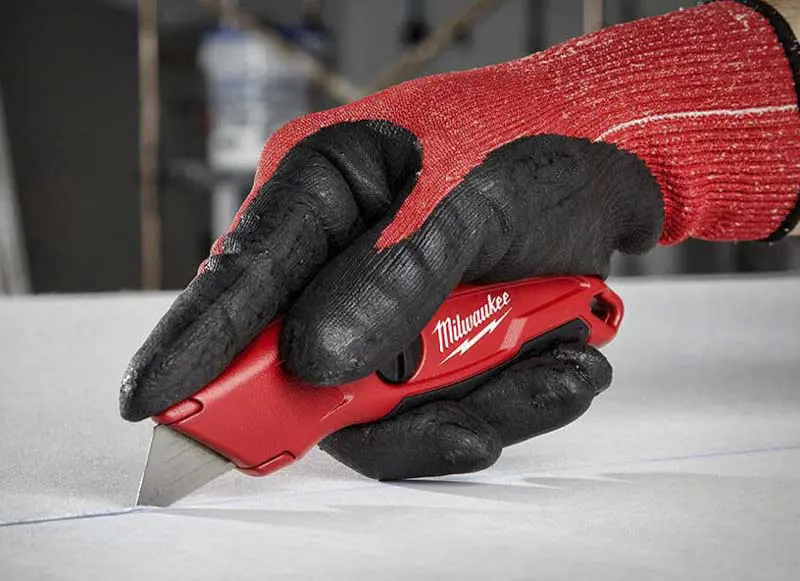
How We Choose the Right Knives For You:
When selecting the best utility knives, we consider a variety of important features. First, we focus on safety features to ensure the knife is reliable and minimizes the risk of injuries. A good utility knife should be easy to handle, especially for rougher jobs like cutting cardboard boxes, trimming carpeting, or tackling a painted seam on a stuck window. We also take into account the blade mechanism, ensuring it’s both safe and easy to operate, particularly for tasks such as slicing building paper, cutting sheet plastic, or working with roofing shingles.
The next consideration is portability and storage. We assess whether the knife is easy to carry and store, which is vital when it comes to folding knives. Knives that are smaller, have belt hooks, and can be deployed quickly are always a top choice. Whether the knife fits comfortably in your pants pocket or can be stowed securely, it needs to be a tool that’s easy to use without fumbling around. We also evaluate how well the knife holds up under use, particularly when handling materials like tarps, rope, or drywall. A reliable locking mechanism or frame lock is crucial for one-handed operation, giving you confidence when using the knife for more intricate work like trimming rug pads or cutting linoleum floor.
Finally, we test the durability and ease of use of different mechanisms. Whether you prefer a slip joint, locking blade, or button lock, we consider how each system holds up in various tasks. Knives with good grip features, such as finger grooves and physical impediments to slippage, are also highly recommended. Based on real-world experience, we find that a knife with a secure lock, like the crossbar lock or AXIS lock from Benchmade, often provides the most satisfying performance and reliability for both left-handers and right-handers alike.
inward, slips behind, closing, one-handed, lockback, spine, secure lock, two hands, crossbar lock, Benchmade, AXIS lock, notch, brands, bar locks, knock-offs, tight, secure, left-handers, button lock, pressing button, opening, closing, fingers, left-hand specific model.
Why Trust Us:
With a 10-year career in the field, I’ve had the opportunity to evaluate and use countless utility knives, discarding many due to poor features, bad ergonomics, or subpar durability. By carrying and testing these knives since 2001, I’ve developed a keen eye for what works and what doesn’t. As a high-end custom builder, I’ve tested a variety of knives in real-world projects, ensuring that only the best make it onto my list of recommendations.
Legal Guidelines for Carrying Knives:
When it comes to carrying pocket knives, it’s essential to understand the laws in your location, especially in the United States. Each state has its own rules regarding the specific types of knives you can legally carry, including restrictions on automatic knives, blade length, and whether knives can be concealed. It’s always a good idea to consult the American Knife and Tool Institute for their helpful state by state guide to stay informed about knife laws. If you’re traveling abroad, things can get even trickier, as each country has different regulations. For example, Austria has very few restrictions, but in Norway, where knifemaking heritage runs deep, there’s a complete ban on carrying knives in urban areas.
While it’s important to have the right tools for the job, knowing the rules ensures that your utility knives won’t land you in legal trouble. Whether you’re at home or abroad, always check for any restrictions that might apply to carrying knives in certain countries. Understanding the laws can save you a lot of time and trouble, ensuring that you’re always in the clear when it comes to carrying your knives safely and legally.
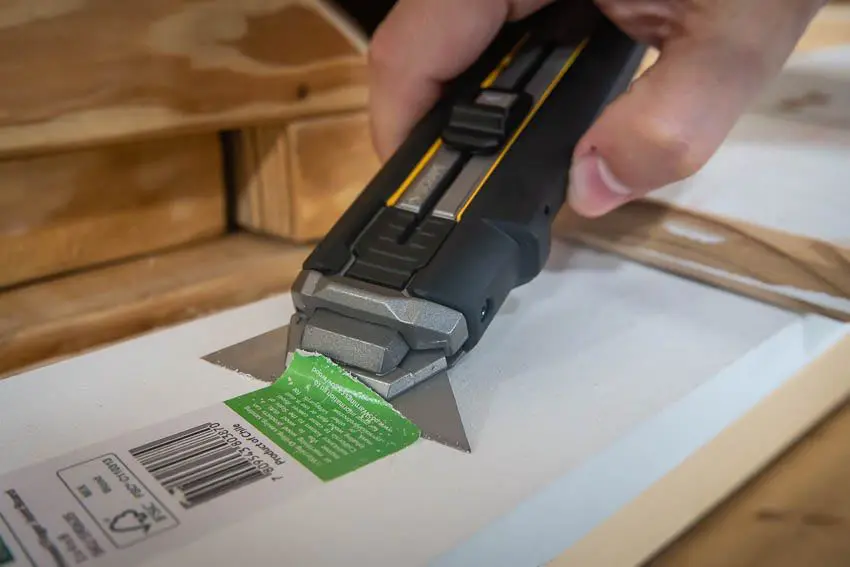
Final Thoughts:
When choosing the best utility knife, comfort, durability, and versatility should be your main considerations. It’s not just about cutting tasks like opening boxes or trimming, but also about finding a knife that suits your unique needs. For instance, if you’re someone who works with cardboard, the blade sharpness is key. Ergonomics matter too, especially if you’re going to be using the knife for longer periods. Whether you’re looking for a folding utility knife or a more durable fixed blade, having the right balance of control, precision, and ease of use can make all the difference. I personally prefer knives that are easy to handle, like those with ergonomic designs and a locking mechanism, which ensure a safe grip and smooth operation every time.
In my experience, reliable utility knives often come with extra features like a quick-release mechanism, making it easy to swap out the blade when it gets dull. A compact design with a deep carry pocket clip is a great addition, ensuring that the knife fits neatly in your pocket or tool belt without getting in the way. Whether you need a multitool with cord cutters or a basic utility blade, the knife should fit your daily tasks and lifestyle. For me, a lightweight and affordable option is always a go-to, and it doesn’t hurt if it’s multi-functional and offers a bit of fun too.


